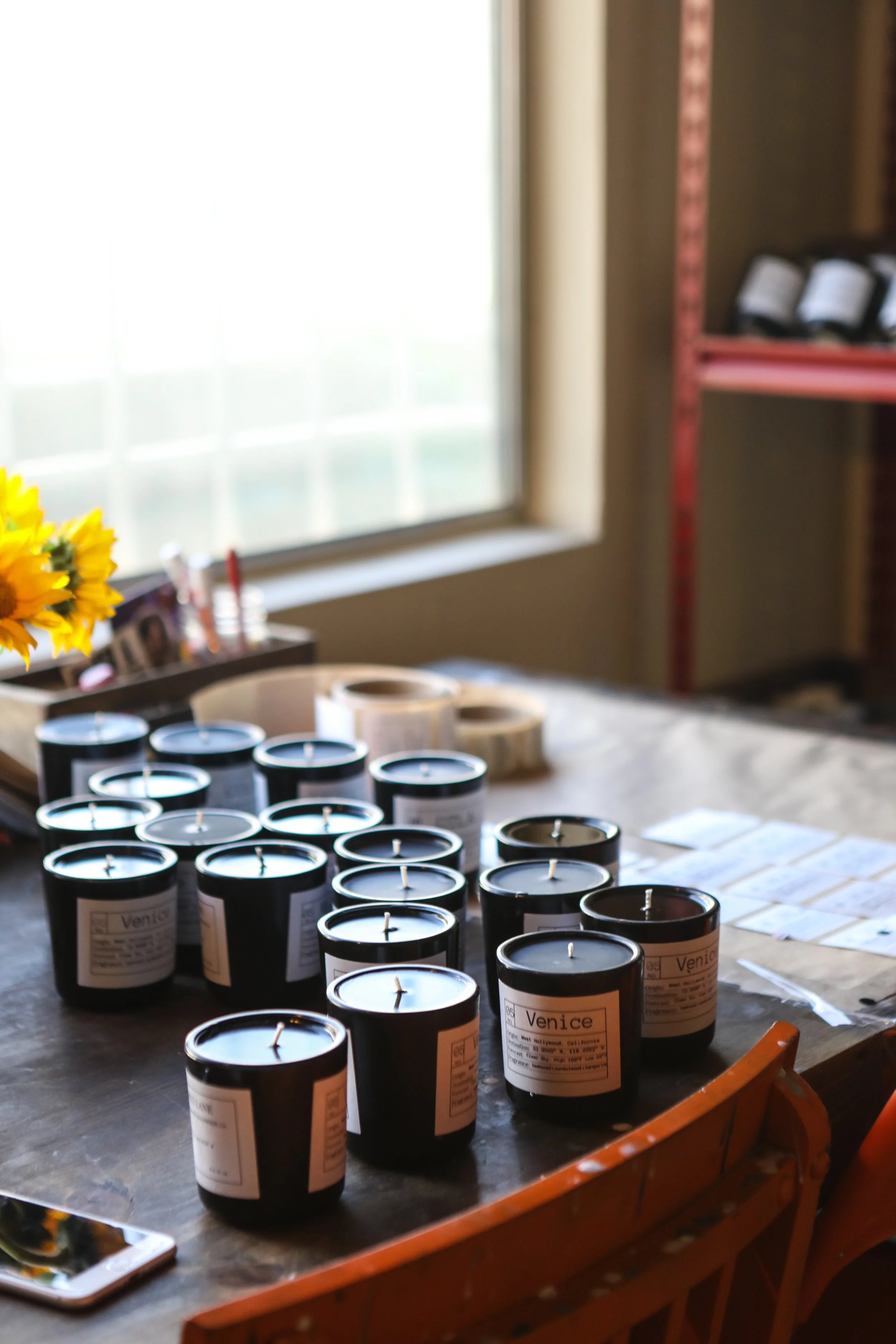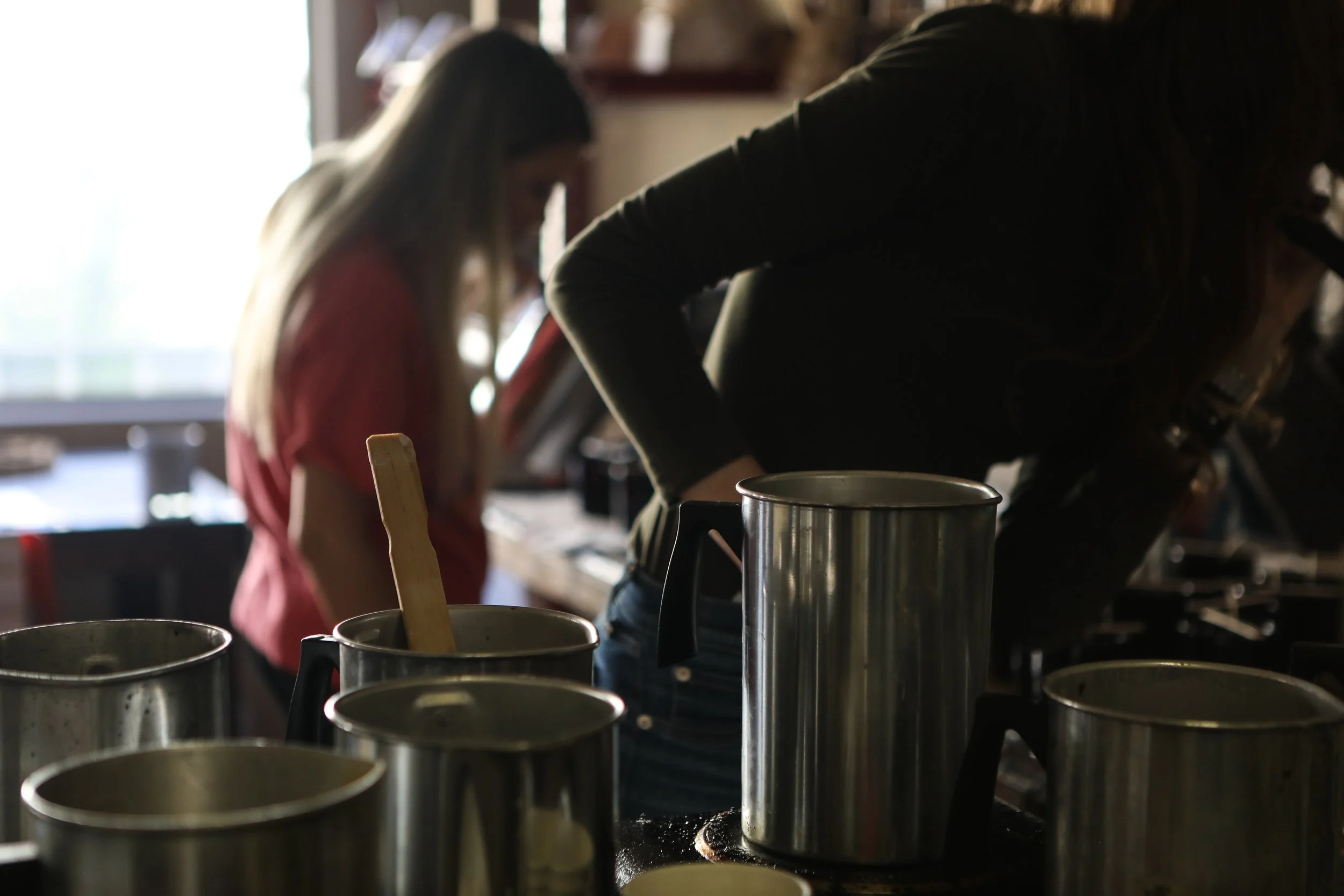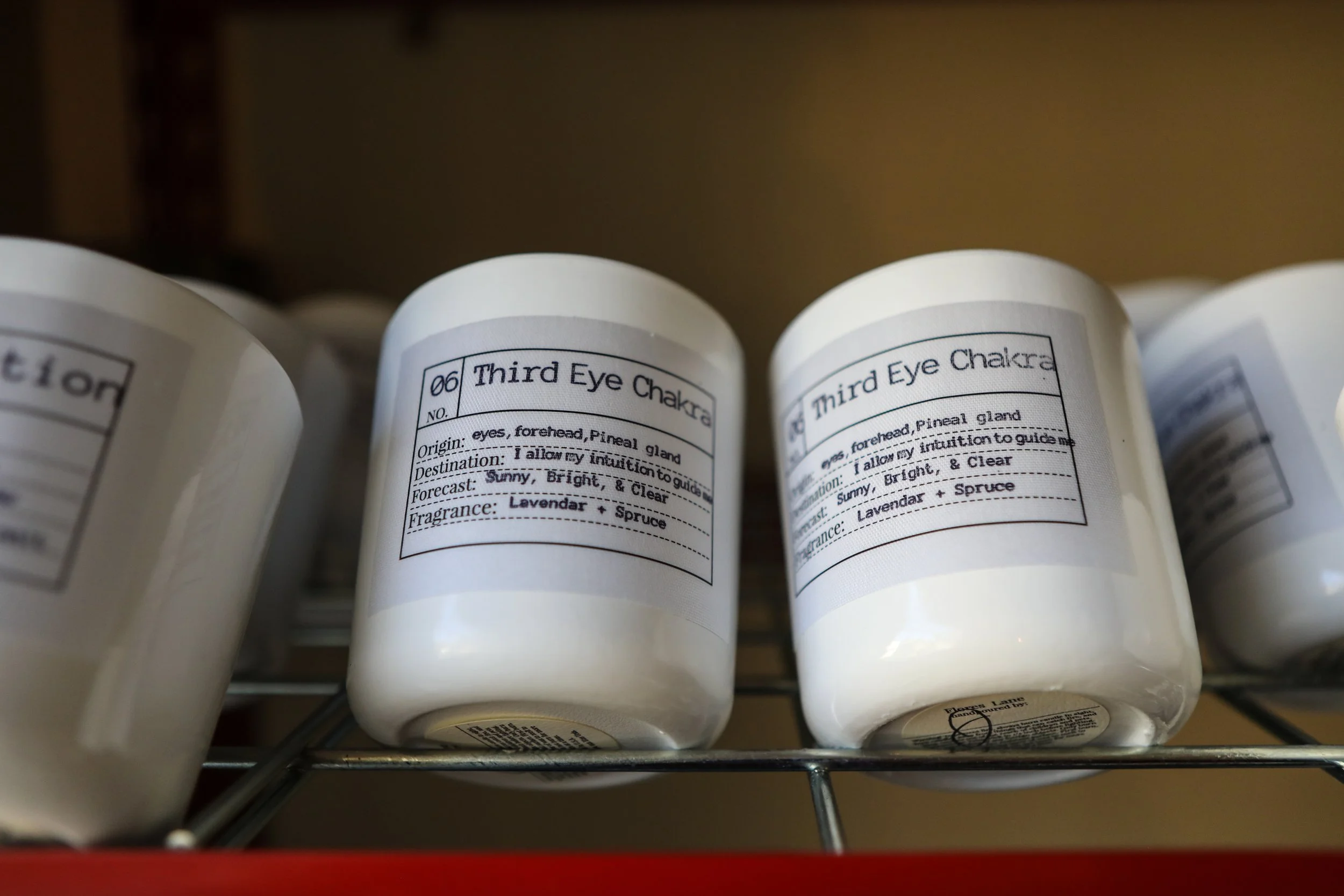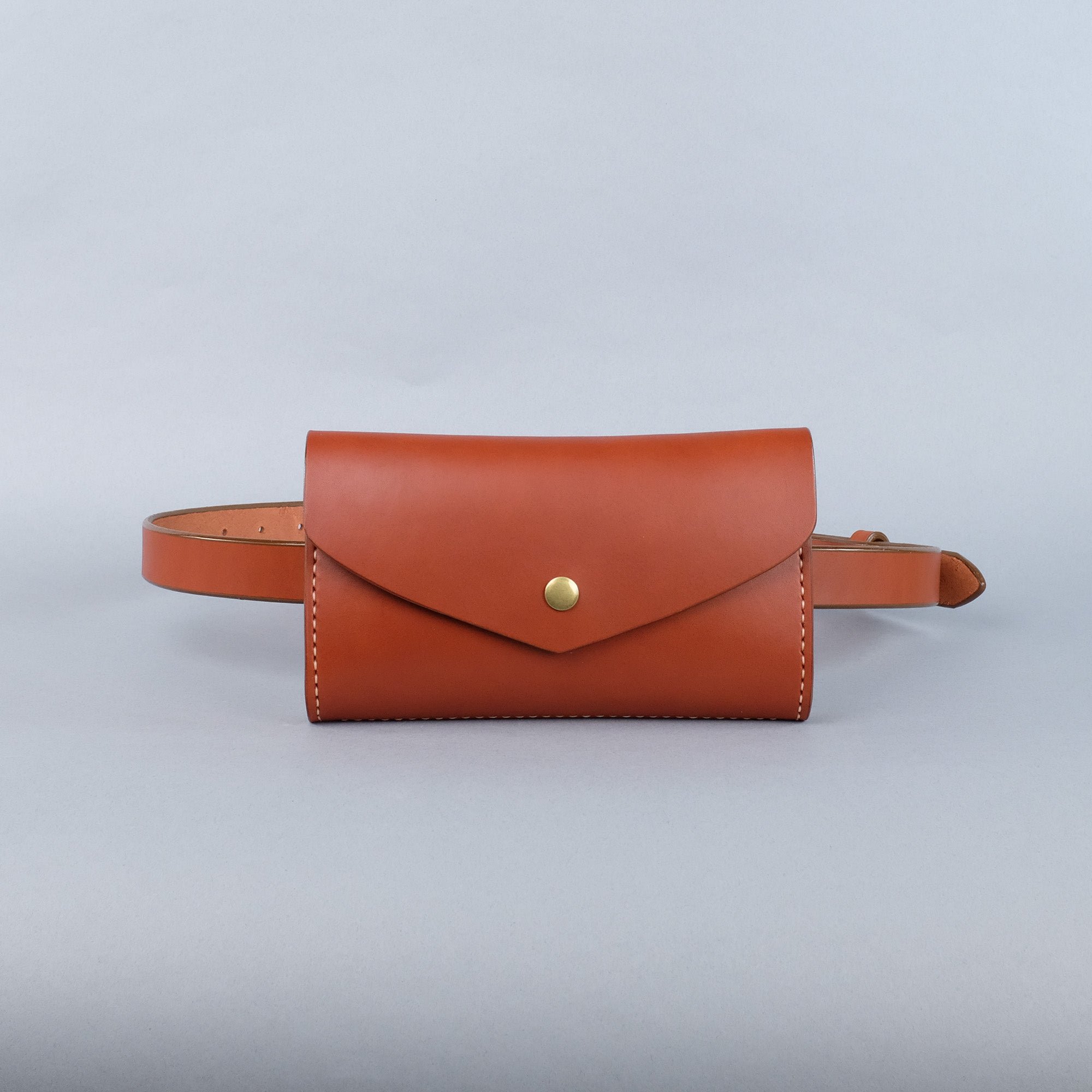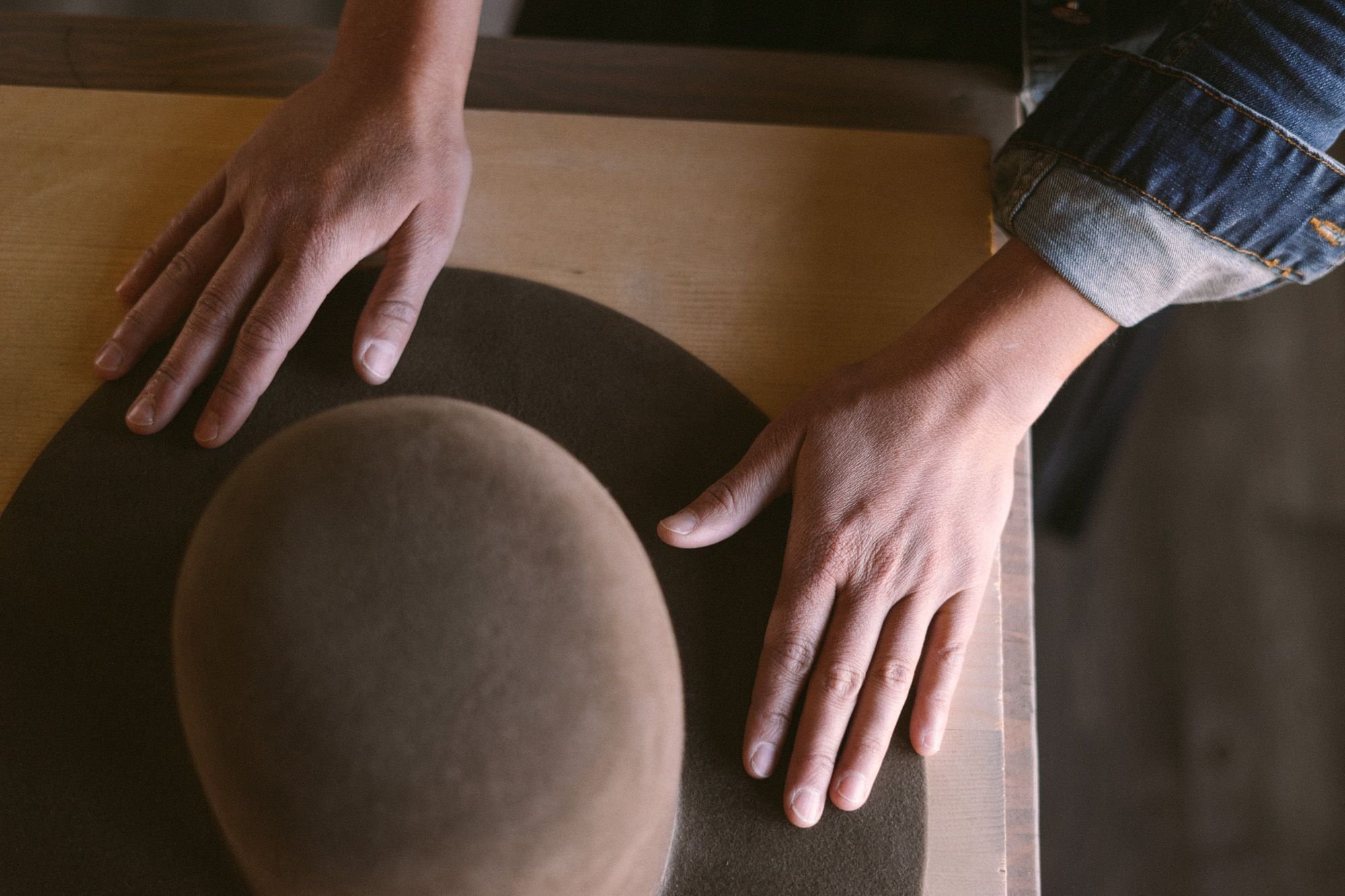Flores Lane — Trish Baden
Ben Ashby
Trish Baden, the owner of West Hollywood’s Flores Lane, was born in Cincinnati, Ohio. When she first moved there from Madison, Wisconsin in late 2014 to work in marketing for a tile and flooring company she found herself needing a creative outlet. Channeling a childhood hobby, she started making candles as a side hobby. It wasn’t long, though, until her side hobby became her full time business.
'"I grew up the middle child of three girls. My mom was an amazingly strong woman, and raised the three of us on her own in Cincinnati, Ohio. If you had told me as a kid that I would grow up to own a business making candles everyday, I probably would have been upset. Growing up, I wanted to be an astronaut more than anything. However, I have made candles since I was a kid and remember the first being a dipped pillar I made at a day camp when I was seven.
I was always a hustler. As an older kid, I used to iron shirt for family at a rate of one dollar per shirt. I made good money doing so, and my family was gracious enough to pay me for small tasks like that. As a teenager, I got my first real job working at an ice cream shop owned by a young married couple. They really trusted me to help them run their business, and it was extremely empowering as a teen to be trusted with someone’s livelihood—but, at the time, I never thought of myself as an entrepreneur.
After high school, I moved away to college and attended Miami University in Oxford, Ohio. I studied marketing, and went on to work in Wisconsin after graduation, but eventually moved to my new home in West Hollywood in November 2014. When I first moved to Hollywood I worked in marketing for a flooring and tile company. In December, living in a new city and with the holiday season approaching I found myself needing a bit of extra money. Wracking my brain for ideas, I remembered my childhood hobby of candle making.
I named my company Flores Lane, and in the following months I began devoting more time to it. In the beginning, I was selling scrubs, lip balms, deodorants, sprays—and candles. I was exhausting myself making everything, I wasn’t perfecting any one product or bringing enough to the table. Sitting back and looking at sales, candles were clearly selling better, so I ditched the other products to perfect my craft.
Since starting my business three years ago, it has gone from a part-time hobby to becoming my full-time job. My identity as a business owner has now blended with my personal life because a lot of my time is spent networking or meeting clients. I end up with friends AND clients or clients as friends. At first, I felt an internal crisis because I felt like I was losing my own identity in this business or people were only talking to me for candles, etc. It wasn’t until I was reflecting on Flores Lane as a brand (over the period of 6 months), that I realized Flores Lane WAS a direct reflection of me. I AM the brand. Establishing that boundary in my life was extremely important for understanding my own role in the business, the brand, and most importantly my life. One thing I wish someone told me: don’t be afraid to own your creation and be proud yourself.
Building a brand takes time and education—educating the consumer takes time but yields trust and allows you to be the subject matter expert. I’ve learned to be transparent, people like that. If you can’t make a deadline, or your box supplier fell through—not that that has ever happened to me—communicate with your client as soon as you sense issues and keep everyone informed. You will make mistakes. That’s a simple fact, and some larger than others, but don’t take yourself too seriously and never stop learning from them. Learn from my lesson in the beginning, keep things simple. When I realized I was overexposing myself trying to make so many varied products, I simplified my brand.
This past holiday season was wild and I only recently hired full-time help until mid-December…needless to say, there was one point at which I hadn’t slept for 3 days straight because I was filling so many orders. As a woman in business sometimes I feel like I have to work a lot harder to garner the respect because I’m not taken seriously. I’ve learned, though, not to let this feeling stop your hustle, rise above it. It wasn’t until I was reflecting after a long week of candle-making for the holiday season that I was making other candles for myself to enjoy and I realized, ‘I really love making candles.’ I never thought I would own my own business, but now that I do, I couldn’t imagine doing anything else!
If I have learned one big lesson through my experience as a business owner, it’s that being yourself and loving what you do makes all the difference. When customers and clients see you being your authentic, transparent—in my case, unabashedly weird—self they tend to want to be a part of that. I am genuinely inspired by the human spirit and how we can create such amazing things through collaboration and group thought. That’s why I’m also not afraid to trade product for marketing or photography, we can learn so much by working together and sharing the word of our favorite people and things. Above all, have fun! The more fun people see you having, the more they will love you and your brand.
FAVORITE QUOTE:
Fear, fear's a powerful thing. I mean it's got a lot of firepower. If you can figure out a way to wrestle that fear to push you from behind rather than to stand in front of you, that's very powerful. I always felt that I had to work harder than the next guy, just to do as well as the next guy. And to do better than the next guy, I had to just kill. And you know, to a certain extent, that's still with me in how I work, you know, I just... go in. – Jimmy Ivon
7 most important hardworking pieces of advice:
A rising tide lifts all ships: create a circle of makers or like-minded creators that you can collaborate, trust, and share best practices. When you collaborate with other hustlers, it’s inevitable they will hold you accountable for your big challenges, help you if shit hits the fan, but also reassure you of
The natural ebb and flow of business- some weeks, you’ll feel on top of the world and like every email or call you make lands! Then the next week you look in the mirror like WHAT HAVE I DONE!?!!?!?! Coming from the world of corporate, I still have moments where I question myself and I always come back to the realization of the ebb and flow.
Following through on every meeting, order, call, event, (whatever) is important and will help your credibility as a business owner and brand.
Every person counts/ treat every client like they are your biggest client- they will be your best salespeople!
Planning is key: if you’re feeling overwhelmed, planning your way out of anxiety is the path to success. What does this mean? If you’re feeling over booked, get a day planner that has hour slots for you to map your days. If you’re feeling scatter brained, start writing lists- even if you have to keep a notebook in every room ( I do this) and then consolidate notes every evening.
This may seem like silly advice, but it’s really important and will save you money: make sure your business is properly filed with your state government. What does this mean exactly? In order to have a business in the US, you need to file your business with the secretary of state (and other applicable entities). For example, my business is owned by me and I was working a full time job when I started it, so I decided to file as an LLC – and file my taxes as a schedule “C”
Let the robots help you work- quickbooks and legal zoom are not overrated- I use both regularly and love them.





